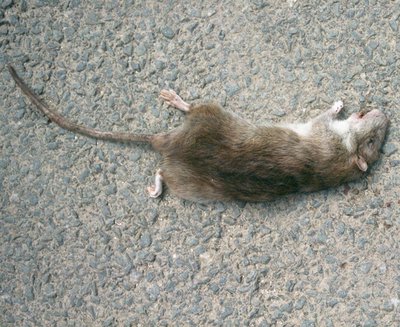
Louise Shimmel, executive director of the Cascade Raptor Center, recalls a great horned owl that was found in a pond last winter. “You could actually see the bruises on his neck where the blood was seeping out of his jugular because his blood was so thin and he was essentially bleeding to death,” she says. “We were not able to save that one.”
Rodenticide, commonly called rat poison, is used in both urban and wild areas. Though the goal is to kill mice and rats, the poison has also been the cause of a wide range of deaths and illnesses in children, dogs and endangered species throughout the country. The most toxic and painful rodenticides are called second-generation anticoagulants.
“In terms of the poison itself, it’s a really horrible way to go. What it’s doing is interfering with the clotting mechanism that the body has, and they’re essentially bleeding internally,” Shimmel says. At the raptor center, severely anemic birds are often brought in with bruising and discolored mucus membranes. The problem, Shimmel says, comes when the rats are poisoned and then consumed by other species.
According to the Environmental Protection Agency, rats that ingest second-generation anticoagulants can take five to seven days to die, giving ample time for predators such as coyotes, raptors and cats to prey on the them, especially given their weakened state and slow movements. In addition, the bait is made to attract rats via smell and taste, which sometimes draws in other animals that eat the bait directly. The bright blue-green colored bait in pellet form is also attractive to curious children.
California’s issues with wildlife deaths from rodenticide, including endangered San Joaquin kit foxes, has led the state to limit the use of the poison early this year, restricting its use to licensed pesticide applicators. This move comes after the EPA’s 2008 decision to remove certain rat poisons from the market that did not use protective bait stations in hopes of eliminating accidental ingestion by children, pets and wildlife. Most recently, some d-CON products made by Reckitt Benckiser will stop being produced by Dec. 31, 2014.
Rose Kachadoorian, Oregon Department of Agriculture pesticide and endangered species specialist, says that those looking to get rid of rat poisons or other unwanted pesticides should look into their local depositories. “Don’t pour them down the toilet, sink or storm water; that is absolutely the worst thing to do,” Kachadoorian says.
Instead of using rodenticides, Shimmel, Kachadoorian and the EPA recommend alternatives and preemptive measures such as removing possible food items that would draw rats in the first place and using humane traps. For homeowners in Lane County looking to dispose of unwanted rodenticides or pesticides, call Lane County Waste Management Division to call and make a drop-off appointment at 682-4120.